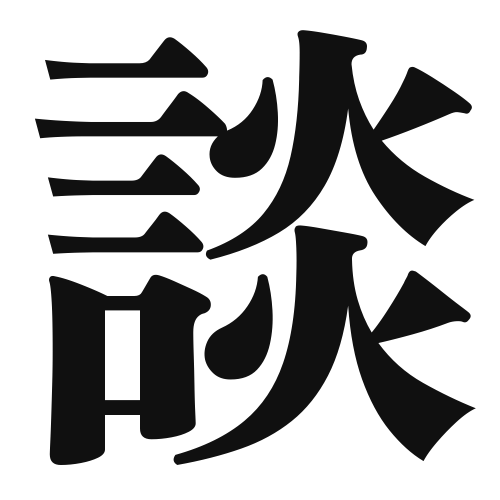1. Overview of Meaning
The kanji “談” (dan) means “to talk” or “to discuss.” It is often used in contexts related to conversation, dialogue, or discourse.
2. Formation and Radical
Formation of the Kanji: The kanji “談” is a compound character, which means it is formed by combining different elements. It consists of the “言” (gen) radical, which relates to speech or words, and “談” itself, which conveys the idea of discussing or talking.
Radical: The radical of “談” is “言” (gen), which is commonly associated with language and communication.
3. Examples of Usage
Common Words and Phrases: Some frequently used words that include “談” are “談話” (danwa – conversation) and “対談” (taidan – dialogue).
Example Sentences in Daily Conversation:
- 私たちはこの問題について談話をしました。 (Watashitachi wa kono mondai ni tsuite danwa o shimashita.) – We had a discussion about this issue.
- 彼と対談するのが楽しみです。 (Kare to taidan suru no ga tanoshimi desu.) – I am looking forward to having a dialogue with him.
4. Synonyms and Antonyms
Similar Kanji: A similar kanji is “話” (hanashi), which also means “to talk” but is more focused on the act of speaking rather than the formal aspect of discussion.
Opposite Kanji: An antonym could be “沈黙” (chinmoku), which means “silence,” representing the absence of conversation.
5. Cultural and Historical Background
Relation to Japanese Culture: The concept of “談” is significant in Japanese culture, where communication and dialogue are highly valued in social interactions.
Proverbs and Idioms: An example of an idiom is “談笑” (danshō), which means to talk and laugh, emphasizing the friendly and light-hearted nature of conversation.
